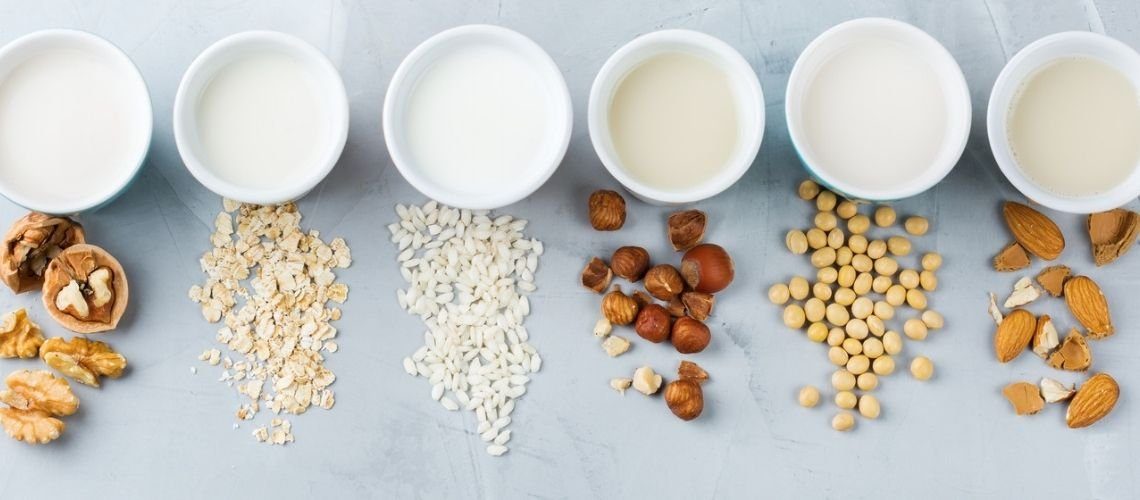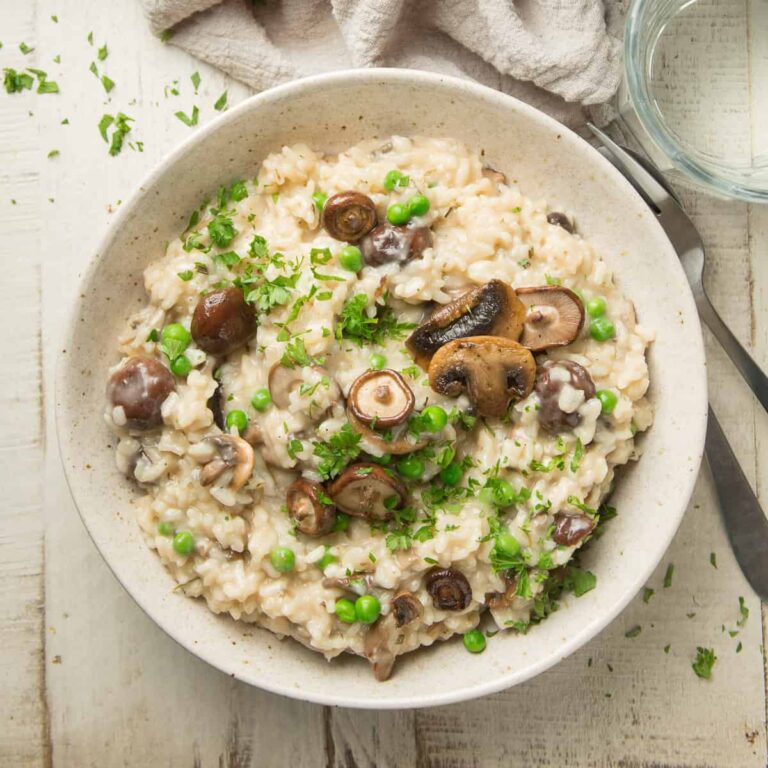Exploring the Health and Environmental Credentials of Plant-Based Milks
In recent times, the shift towards plant-based milks has been nothing short of remarkable. No longer do we raise eyebrows at the sight of someone ordering a soy latte; instead, plant milks crafted from almonds, coconuts, oats, rice, and soy have firmly established themselves as a mainstream choice. But what has triggered this transformation? And how do these plant-based alternatives measure up against traditional dairy in terms of both our well-being and the planet’s health? Before you place your next coffee order, let’s delve into the details.
The Surge of Plant-Based Milk
The allure of plant-based milks has been steadily growing, with a remarkable transformation unfolding before our eyes. According to esteemed market research agency IBISWorld, these alternative milk options now claim a substantial seven percent share of Australia’s overall milk consumption. Leading the charge are the “big five” – soy, almond, oat, coconut, and rice milks. Among these contenders, soy presently commands nearly half of the plant milk market in Australia. However, projections suggest that almond milk is poised to ascend to the throne in the near future.
A Rich Historical Tapestry
As palates evolve, it’s easy to dismiss plant-based milks as just another fleeting culinary trend. However, the reality couldn’t be further from the truth. Plant-derived milks have been woven into the fabric of human sustenance for centuries, if not millennia. Recipes featuring non-dairy milk have traversed through the annals of history across Asia, Africa, Europe, and the Middle East. These time-honored practices endure as integral components of global culinary heritage even today.
In recent times, the dairy industry has launched a battle against plant milks, grappling with the terminology used to describe non-dairy alternatives and raising concerns about potential nutritional deficiencies if dairy is replaced. However, the truth reveals a long-standing history of plant milks that spans across centuries and cultures, signifying their deep-rooted presence in our diets.
Soya Milk: A Nutritional Legacy from the East
Soya milk, derived from soya beans with origins in China, has transcended its Asian roots to become a global sensation. Since the 19th century, soya beans have found their way to the Americas and Europe, where they have been cultivated for their high nutritional value. Soya milk, especially when made from European soya beans, stands as an environmentally friendly choice.
Historical records trace back to 1365, showcasing early mentions of soya milk in Chinese texts. Gradually, this plant milk gained prominence, finding its place in traditional Chinese cuisine by the 17th century. The concept of soya milk as a beverage emerged in 1866, highlighted by Frenchman Paul Champion. His writings depicted the Chinese enjoying hot soya milk from tofu shops, forming part of their breakfast routine.
Soya’s journey to the West burgeoned in the 19th century as it reached Europe and the USA. The term ‘soy-bean milk’ entered the scene in a 1897 US publication, comparing the nutritional attributes of soya and cow’s milk. In 1910, the world’s first soya dairy factory was established near Paris, marking a significant milestone. Soya milk’s expansion continued, with factories sprouting in the USA and China in the 1920s.
An intriguing legal battle unfolded in the mid-20th century, as Bob Rich introduced soya-based Whip Topping, facing accusations from the dairy industry of creating an unlawful imitation. The case’s outcome established soya milk as a legitimate dairy substitute, paving the way for further development.
In the UK, the Plantmilk Society, founded in 1956, contributed to the creation of commercially viable plant milk. The result was calcium and vitamin-fortified soya milk, eventually leading to the establishment of Plamil Foods in 1972. Despite efforts to hinder its growth, soya milk’s popularity surged across Asia, Europe, Australia, and the United States during the 1970s and 80s. Technological advancements, including TetraPak cartons, further propelled its expansion, solidifying soya milk’s status as the most preferred and nutritious non-dairy milk.
Coconut Milk: A Creamy Emblem of the Tropics
Coconut milk, extracted from grated coconut meat, holds a unique place in culinary traditions across Southeast Asia, South Asia, the Caribbean, and northern South America. Its versatility spans centuries and continents, with coconut palms finding their homes in subtropical coastal zones globally.
Almond Milk: An Age-Old Elixir of Nutrients**
Almond milk, with its origins in the Middle East, India, and North Africa, boasts a legacy that transcends time. Its mention dates back to the 13th century in a Baghdadi cookery book, with references proliferating through the Middle Ages in both Christian and Islamic regions. As a beverage and dietary alternative, almond milk gained prominence for its digestibility. The 19th and early 20th centuries marked a resurgence in almond milk’s popularity, particularly in the USA, driven by vegetarian and vegan movements.
Rice Milk: A Newcomer with a Niche
Rice milk, comparatively new to the plant milk scene, has steadily made its presence known. In 1921, Vita Rice established the first rice milk factory in San Francisco, heralding a new era for this lesser-known alternative. Its popularity soared in 1990 with the introduction of TetraPak packaging, making it more accessible to a broader audience. While rice milk has its enthusiasts, its limited compatibility with tea and coffee has somewhat restrained its popularity.
Horchata: The Timeless Elixir of Plant-Based Bliss
Horchata, a traditional beverage in Spanish-speaking countries, boasts a history dating back to the 8th century. Made from ingredients such as almonds, sesame seeds, rice, and more, horchata offers a tantalizing glimpse into the world of diverse plant-based drinks. Although modern variations sometimes include cow’s milk, the original horchata remained purely plant-based, a testament to the enduring appeal of plant milks.
Embracing the Bean-Based Bounty
Intriguingly, many cultures have long embraced plant-based beverages beyond just milk. Coffee and cocoa, two beloved beverages, are quintessential examples of bean-based delights that have been enjoyed for generations. The journey of plant milks reveals an intricate tapestry woven with history, culture, and a commitment to nourishment.
By exploring the rich history and cultural significance of plant milks, we not only gain a deeper appreciation for these alternatives but also recognize their lasting impact on our dietary choices. As we sip on almond lattes and indulge in coconut curries, we honor a tradition that transcends borders and time, reminding us that the world of beverages is far more diverse and fascinating than we might have imagined.
Nutritional Excellence and Environmental Impact
When pitted against traditional dairy, plant-based milks reveal a myriad of captivating facets that warrant meticulous exploration. Let’s embark on an odyssey through the health and environmental dimensions of these alternatives.
1. Nurturing Your Well-being with Plant-Based Milks
The allure of plant-based milks extends beyond taste, transcending into the realm of health benefits. These alternatives often embrace lower saturated fat content, making them a welcoming option for those conscious of heart health. Almond milk, in particular, is celebrated for its vitamin E content and potential antioxidant properties, contributing to skin vitality and cellular well-being.
Oat milk, on the other hand, boasts a soluble fiber known as beta-glucans, which have been associated with promoting heart health by helping to reduce cholesterol levels. Additionally, soy milk’s protein profile can rival that of dairy, offering essential amino acids that play a pivotal role in muscle development and overall vitality.
2. Environmental Considerations: A Greener Path
In the realm of environmental stewardship, plant-based milks often take center stage. The production of traditional dairy necessitates considerable land use, water consumption, and greenhouse gas emissions. Conversely, plant milks frequently leave a lighter ecological footprint. Almond milk, for instance, requires significantly less water to produce compared to its bovine-derived counterpart. Oat milk’s cultivation is similarly gentler on the environment, with reduced emissions and resource utilization.
3. Crafting a Sustainable Future
As sustainability resonates as a paramount concern, the plant-based milk movement garners additional appeal. Choosing plant milks aligns with conscious consumerism, enabling individuals to play an active role in fostering a more sustainable food system. By embracing these alternatives, you contribute to the reduction of animal agriculture’s ecological impact and promote a regenerative approach to nourishment.
In a landscape where dietary choices reverberate far beyond the plate, the embrace of plant-based milks marks a pivotal step towards a more harmonious coexistence with both our bodies and the planet. From soy’s steadfast foothold to almond’s burgeoning prominence, these milks exemplify a synergy between nourishment and sustainability. As you stand poised to place your next coffee order, remember that your choice transcends mere taste – it reverberates through the intricate tapestry of human well-being and environmental vitality. So, sip consciously, for your cup brims with not just milk, but with aspirations for a healthier, greener world.
Opting for Healthier Alternatives: Unveiling the Benefits of Plant Milks
In a world where dietary choices steer the course of our well-being, the spotlight is now on the burgeoning popularity of plant milks. As we delve into the health aspects of these dairy alternatives, a landscape rich with options unfolds. Let’s explore how plant milks measure up against dairy, the role of fortification, and why making the switch is a decision your body will appreciate.
Soy Milk: A Protein-Packed Marvel
Soy milk, derived primarily from whole soybeans, emerges as a robust source of protein. Remarkably, most soy milks boast all nine essential amino acids crucial for human sustenance. Beyond protein content rivaling that of cows’ milk, soy milk boasts reduced sugar levels and the absence of lactose—an allergen endemic to dairy. Modern soy milk varieties often sport a fortified profile, enriched with vitamin A, vitamin B12, vitamin D, calcium, and other vital nutrients. A compelling choice, soy milk holds its rightful place as a revered dairy alternative.
Embracing Almond Milk: A Calorie-Conscious Triumph
Almond milk, a lighter alternative, emerges as a calorie-conscious contender. Especially in its unsweetened form, almond milk presents a low-calorie option. Moreover, a glass of almond milk generally hosts lower saturated fat content than full-cream cows’ milk. Elevating its nutritional potency, almond milk variants enriched with calcium, protein, and essential vitamins offer a balanced embrace of taste and health.
Oat Milk: The Heart’s Companion
Among the pantheon of plant milks, oat milk stands distinguished for its heart-friendly attributes. A lowered saturated fat content compared to cows’ milk positions oat milk as an ally in promoting cardiovascular health. Notably, oat milk boasts beta-glucan, a soluble fiber renowned for its potential to combat high cholesterol and bolster heart well-being. Seek out calcium- and vitamin-fortified oat milk, some of which pack an added protein punch derived from plant-based sources.
Embodying the Goodness of Coconut Milk
Coconut milk, while richer in saturated fat than other plant-based counterparts, still prevails as a healthier option than dairy. Its distinct botanical classification renders it safe even for those with nut allergies. Fortified variants, enriched with calcium, vitamins, and minerals, align with the ethos of holistic well-being. The appeal of coconut milk lies not only in its nutritional value but also in its inherent versatility.
Rice Milk: The Gentle Allergen-Free Companion
For those navigating allergen sensitivities, rice milk emerges as a commendable choice. As the least allergenic alternative, rice milk extends its accessibility to those avoiding lactose, soy, or nuts. Its natural sweetness resonates with those seeking a touch of flavor. Fortified with calcium and vitamin D, rice milk is an excellent addition to the palette of plant-based milk options.
Exploring Dairy’s Terrain: Navigating Choices
In the panorama of dairy, full-cream cows’ milk presents a familiar option. Boasting inherent protein and calcium content, it aligns with the nutritional demands of nurturing calves into adulthood. Nevertheless, the discourse extends beyond nutritional prowess. Leah Dowling, an esteemed dietetics lecturer, underscores the redundancy of compulsory dairy consumption. While dairy holds intrinsic value, its nutrients find abundant alternatives within a balanced diet.
A Paradigm Shift: Plant-Based for the Planet
Amid mounting concerns for ecological sustainability, the landscape evolves to embrace plant-based choices. Amidst debates surrounding crops like almonds and coconuts, plant milks shine as champions of eco-consciousness. Pivotal research from the University of Oxford reveals the substantial environmental footprint of dairy production. Opting for a vegan diet, shunning meat and dairy, emerges as a transformative means to curtail environmental impact. Choosing locally produced soy milk or exploring niche alternatives like hemp underscores a commitment to a greener tomorrow.
Crafting Your Perfect Brew
For coffee connoisseurs, the transition to plant milk poses no hindrance to indulging in a frothy caffeine delight. A simple warming of your chosen plant milk before incorporating coffee ensures a seamless, curdle-free experience. Cafe enthusiasts rejoice, as barista-blend plant milks, designed for luscious, creamy coffees, grace the aisles of supermarkets.
The Journey Ahead: Savoring New Horizons
In this landscape teeming with diverse plant milk offerings, the stage is set for a transformative culinary journey. Your body, the planet, and the welfare of our animal companions all stand to gain from the embrace of these alternatives. As you embark on this exploration, remember that every sip is a conscious step toward a healthier, more sustainable future. The choices you make today ripple through the fabric of tomorrow, weaving a tapestry of vitality and mindful nourishment. Indulge, explore, and discover—your wellness journey awaits!





